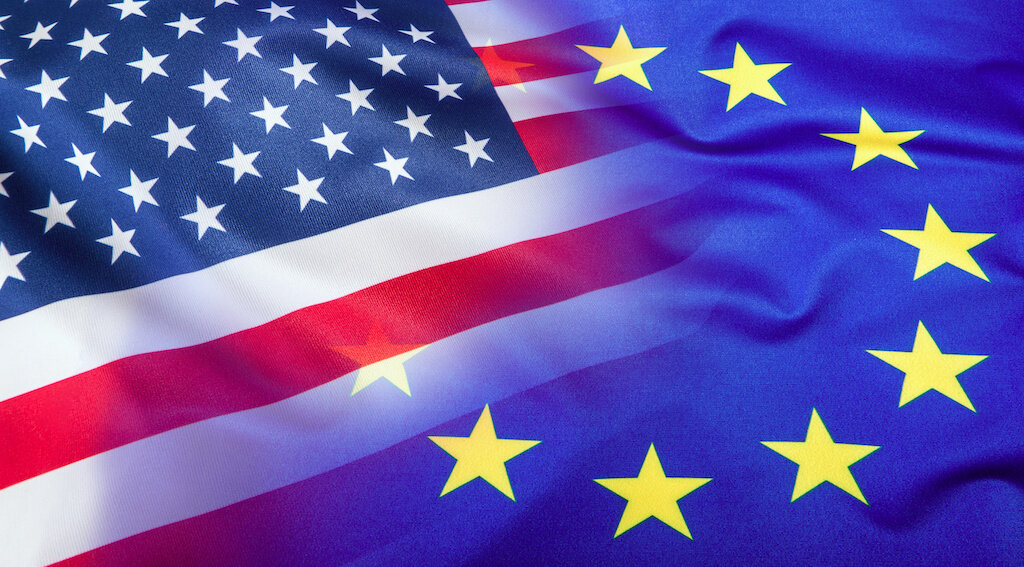Twin Export Opportunities for Canadian Wine

For Canadian wineries looking to capitalise on recent international recognition for our wines and our wine regions, two export doors have recently been nudged further open.
The United States Three Tier System and Joe Biden’s Executive Order
Starting with the United States, President Joe Biden’s Executive Order of July 9, 2021 tasked a number of federal departments and agencies to “address overconcentration, monopolization, and unfair competition in the American economy”. It specified two areas of beverage alcohol that should come under scrutiny: consolidation in all three tiers of the US system of (1) production, (2) importation/distribution/wholesaling and (3) retail and their impacts on smaller businesses; and trade practices that unfairly restrict competition and reduce market entry for smaller businesses.
A recent Wine Enthusiast article gained some circulation in Canada for observing that the “pull” model in the US hasn’t worked very well. Even if keen sommeliers in NYC, or Atlanta, or Dallas, are trying to import cool Canadian wine for their customers, it is still a low percentage try (It’s Nearly Impossible to Get Canadian Wine in the U.S. Here’s Why). The article partly attributes this barrier to relatively small production in Canada, miniscule proportions of which are exported (3% of BC wine and 5% of Ontario, estimate the provincial marketing bodies); partly due to the exchange rate (not favourable to Canadian producers due to high production costs and the expenditure of marketing budgets in American dollars); partly due to unawareness by most American consumers; and … the lack of interest by major distributors in taking on a boutique Canadian brand.
So, what could this review by the relevant agencies mean for Canadian wineries? (Over simplifying, the relevant agencies are: the Federal Trade Commission (FTC) to look into consolidation, and the Alcohol and Tobacco Tax and Trade Bureau (TTB) to look into unfair trade practices).
It is still early days, but as Robert Tobiassen, President of the National Association of Beverage Importers, tells me, reading the tea leaves reveals some prospects for a loosening of the consolidation impacts within the distribution tier, and a regulatory undoing of some trade practices if found to be unfair. In this realm, TTB may recommend rule changes on regulations under the Federal Alcohol Administration Act which have imposed barriers to competition hindering smaller industry operators. He believes the Biden Administration is seeking to improve competition across a number of sectors and re-balancing the rules to favour the entry and ongoing participation of small businesses – aimed of course at US enterprises. (For a detailed read, see Tobiassen’s post of July 12 on the Booze Rules blog.)
These developments may benefit smaller and medium size Canadian wineries over time – but this is not likely a “turn on a dime” development that will make a practical difference in the short term. Tobiassen doesn’t believe the three tier system will be broken up, but anticipates some concerning days ahead for the large conglomerates, most formed by mergers over the last five years, which dominate the distribution tier (four wholesalers control 80% of the US market). Canadian exporters should keep an eye out for opportunities to sign on with newly formed - or newly-empowered - independent importers/distributors who can bring products into specific markets as part of your targeted US export strategy.
Brexit and the UK’s Abolishment of the VI-1 Requirement
Another sliver of good news comes from the United Kingdom, and appears to take immediate effect, benefitting existing and potential Canadian exporters to the UK.
As part of its divorce from the EU, the British government is rewriting the rules for imported wine, and had previously signalled that exporters from the EU (and everywhere else) would have to complete the VI-1 documentation (and samples in many instances) to have wines admitted to the UK (the VI-1 continues to be EU-wide standard documentation). Early this week, the UK’s Food and Drinks Minister announced the scrapping of all import documentation, citing the impairment of an industry that is already grappling with post-Brexit and COVID-related supply chain issues and restrictions, and facing international competitive headwinds. Government positioned it as a cost savings (the press release says “…VI-1 certificates add 10p to every bottle of imported wine”), and an industry analysis estimates that the lab analysis of samples would have cost £330 for every wine shipment.
This is good news for Canadian exporters to the UK market. London has long been the dominant marketplace for top quality global wine. While Canadian wineries’ export volumes are very small, the industry’s strategy is to prioritise wine markets that have a demonstration effect – and reputation enhancement – due to exposure to tastemakers, buyers and influential wine writers. Calling off this onerous non-tariff trade barrier should mean easier processing for Canadian exporters, and a more attractive business setting for those UK wine merchants/agents who do – or could in future – carry Canadian wine.
It’s now up to would-be exporters, their representative associations and Global Affairs Canada to keep pursuing opportunities in global wine markets, and continue the high profile advances and recent successes for Canadian wine on the world stage.
If you wish to receive all WineDrops posts, please join the mailing list here: https://winedrops.ca/contact.
